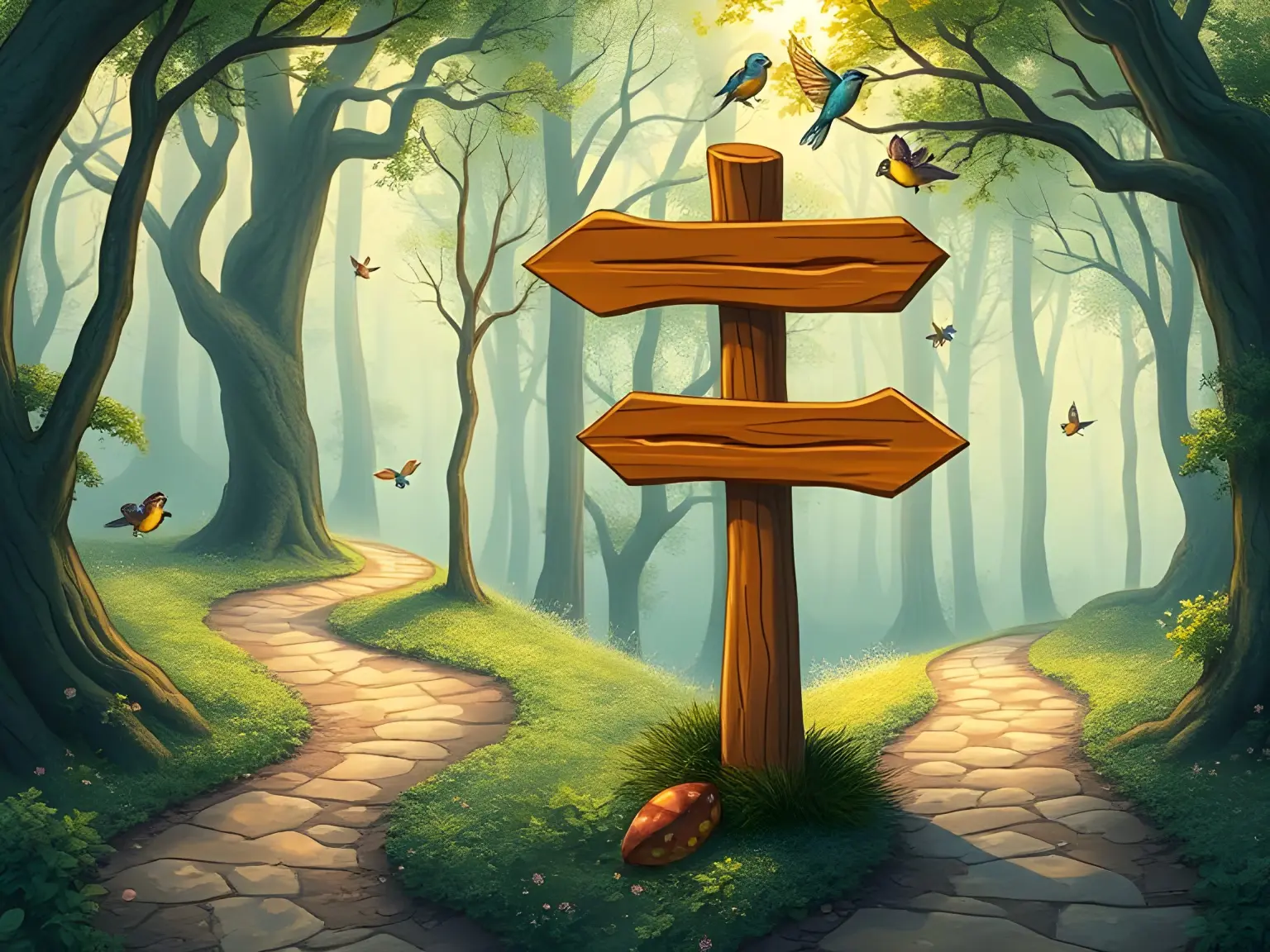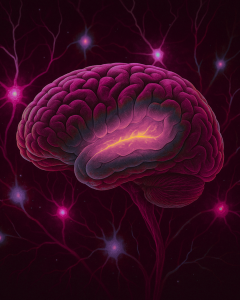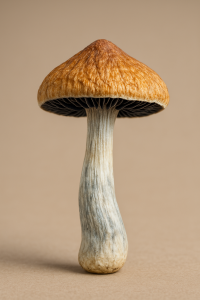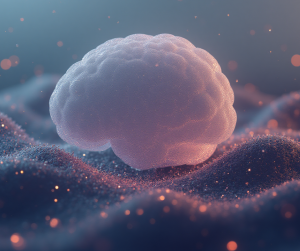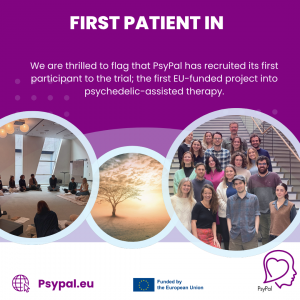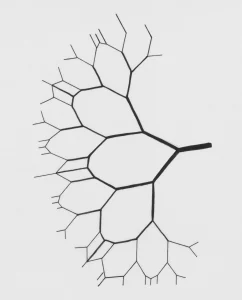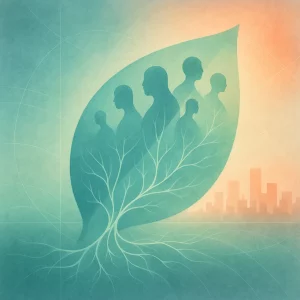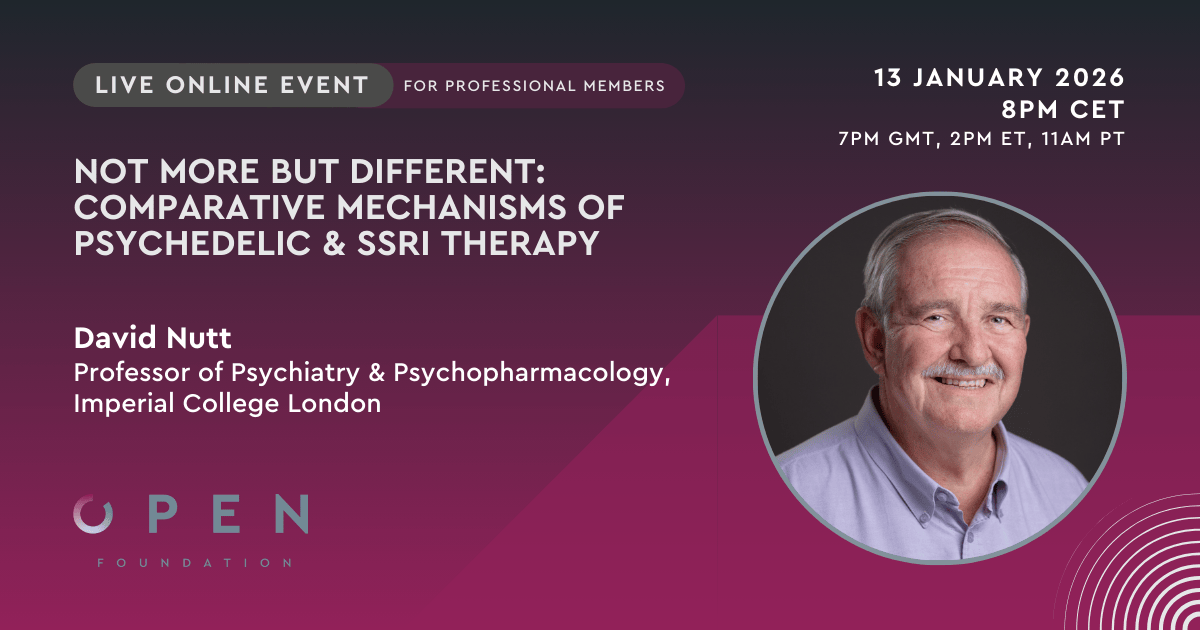From the Field: Lessons from psychedelic practices in the Netherlands is a blog series based on my qualitative research at the Rijksuniversiteit Groningen in collaboration with the OPEN Foundation. The study focused on the conception and practice of safe and beneficial use of psychedelics in group settings in the Netherlands: more specifically in counterculture, ayahuasca ceremonies and truffle retreat centers. Based on in-depth interviews with experienced practitioners, the series highlights and connects diverse aspects of psychedelic practices, from cultural influences through ethics to sensory stimuli. This post dives deep into participants’ autonomy.
Part 1: Lessons on Psychedelic Harm Reduction with PsyCare NL – From the field
Part 2: Dutch Psychedelic Practices Shaped by Culture and Law
Part 3: From the Field: Music in Psychedelic Practices
Part 4: From the Field: Psychedelics and Nature
Part 5: From the Field: Psychedelics and Autonomy (current post)
Part 6: Safe and beneficial experiences
Planning my research, I hypothesized that autonomy would be a significant characteristic of countercultural practices. I did not anticipate that it would play such an important role in all practices, and that all facilitators in my study would spontaneously highlight this. Respondents used specific vocabulary that reflected their attitudes towards autonomy: they “offer” advice and services to participants, and “invite them”, or “encourage them” to follow.
Discussing autonomy in the context of psychedelic practices is not straightforward. Cambridge dictionary defines autonomy as “the ability to make your own decisions without being controlled by anyone else”. Due to psychedelics’ association with enhanced suggestibility, the very notions of autonomy and control become blurry. Participants’ ability to make decisions may be compromised while under the influence, letting go of control may be a part of the process, wills and feelings may be influenced by group dynamics. Discussions surrounding psychedelics often raise ethical concerns about the validity of informed consent, vulnerability of patients, and the potential for abuse of authority. As Ido Hartogsohn reminds us, it was mind-control that drove “the massive financial support of the CIA for LSD research during the 1950s and 1960s”.
The emphasis that facilitators put on autonomous choice is woven through the entire practice. It begins with insisting that participants should come out of their own free will, rather than be convinced into the experience. I will use three concrete examples to illustrate how the abstract notions of autonomy and freedom are applied: a) the choice of event, b) conduct and participation in activities, and c) dosing.
Freedom and autonomy in psychedelic practices
Some choices are made before the first contact between facilitators and potential participants. Participants choose between group and individual use, and opt for one practice over another (i.e. ayahuasca ceremony, retreat centre or a cultural event). These decisions may also imply the substance and general setting for their experience. The following examples are used to demonstrate how autonomy is expressed within the practices themselves. Once we have an idea, the second part of the article will discuss the significance of autonomy and some of its implications.
Choosing the type and length of event
In most ceremonial settings there are different lengths of events to choose from. For example, Albert recommends two nights of ayahuasca ceremonies, but participants can freely choose to stay only one night. Similarly, Anton’s workshops are mostly three or four days long, which he considers most beneficial. Next to these, there are nine and one-day retreats. He started offering one-day workshops “to accommodate for people” who indicated that they cannot fit longer events into their busy schedules.
In counterculture, the contexts available for psychedelic experiences are manyfold. They vary in the type of event (e.g. an arts festival, a party, a nature walk), length (from a few hours to multiple days), size, intensity of stimuli and so forth. The interviewees occasionally expressed their opinions about events’ possible contribution to safe and beneficial use of psychedelics. However, since “everybody has their own preference”, they do not consider it their responsibility to make the best selection, but rather to offer a large variety which can answer different needs and wishes.
Expected conduct and participation in activities
While facilitators offer activities and practices to support the experience in beneficial ways, participants are not always comfortable in following them. According to Albert, it is “far better that people don’t move”, and stay seated throughout the ceremony. However, experience has taught him that “most people can’t handle it“. As he explains, when the effects begin, people are afraid to let go and “start to move around”. For example, some people want to go outside to smoke; he allows it, and also considers it a part of his job to bring them back in (for safety reasons as well). In the retreat centre, participants are advised to use an eye-mask during the ceremony, to come with comfortable, light clothes, and to avoid using phones, watches or other technological devices throughout the retreat. “But nothing is required in that sense. It’s just advice”, Rob stressed. Other retreats make different choices, such as collecting participants’ mobile phones at the beginning of the retreat. Allowing this freedom means accepting what Rob described as occasional “unsettling moments”, like participants choosing to use their phone at the dinner table.
Participants are not obliged to take part in any activity. During the on-site preparation for the ceremony, which can amount to a full day, Anna “invites people to be present with everything”, but at the same time “feel into your own needs”. She explains that participants are free to skip activities, as long as they notify the organizers, and may still stay in the space. For example, after participating in the first ceremony, sometimes people do not want to drink in the second, “because they either felt that in ceremony, or there’s so much going on, whatever, it doesn’t matter. I always invite them to still be in ceremony with us without drinking”. Anton shared a similar approach. When someone is reluctant to participate, he asks them to “reflect, why don’t you partake? You don’t have to explain to us, but to yourself, and maybe there’s a lesson in it also: I’m shy, or I don’t like this, or I’m just lazy, or I want to lay down, don’t bother me, whatever.” Note the similar language. In all these examples, participants’ autonomy is granted, without dependency on justifications, motivations, their awareness thereof, their constructiveness to the process or any other ‘objective’ valuation.
Substance and dosing
My study included a variety of substances. Ceremonial practices involved either ayahuasca or truffle based tea. In the countercultural setting, substances are neither supplied nor controlled by the organizers, and polydrug use is prevalent. All interviewed facilitators, without exception, said that participants have a choice about their dose.
In the uncontrolled environment of counterculture, you are expected to “bring your own pills”, Carla says. To be clear, “don’t ask us for the pills!”, Chris added laughingly. Apart from obvious legal concerns, this approach stems from a high commitment to freedom, autonomy and self-responsibility. In Carla’s words: “I would never tell somebody, ‘oh, you should take this or you should do that’, no. Find out for yourself, and if you’re interested, then we can talk about it. I mean, I could show you different ways. I would never ever tell anybody what to do. No. No. That’s not my position.” People are expected to learn about substances and doses from the internet, books, and one another, “and responsible use, that is up to everybody themselves.”
According to all ayahuasca facilitators in the study, participants are offered a certain initial dose (in a cup), which they can fully or partially drink. After one to two hours, there is an option to drink more, and so it goes on until the announcement of the final round, three to four hours later. “The dose is different for every person”, Albert stated, and experience plays an important role: “one in eight who drink for the first time don’t feel a big effect. It’s even possible not [to feel] an effect at all, or at least this is how they experience it. Sometimes they do have an effect, but they don’t recognize it as an effect.” From the facilitator’s side, Anton explained that he knows the level of sensitivity only with regular participants. With new ones, “it’s more guessing instead of knowing”, which is one of the reasons for preferring longer events. Based on their experience, variation in sensitivity can extend from needing one third of the standard measuring cup up to three and even four full cups. Other than experience, sensitivity may be attributed to various mental and physical factors, such as metabolism. In addition, because ayahuasca is a brew, each batch may differ from the previous. All of these elements also change from one day to another. Thus, Anton clarified, rather than sticking to predetermined knowledge, “it’s observing what’s going on”, monitoring participants’ state, discussing it, and helping them reach a decision.
During a preparatory forest walk, retreat facilitators discuss dosing options with each participant. Choices are achieved mutually, “depending on if people already have experience with psychedelic substances, what their current state of being is and how at ease they feel with a certain [dose]”, Rob explained. Each participant receives the agreed dose, and like in ayahuasca ceremonies, they can drink the whole cup or leave some for later. “After one hour we check in with the participants if the dosing feels right or if they want to go deeper”, Ronald specified, “and that could be drinking the rest in the cup, but also having a top-up.”
Few elements are mandatory or predetermined. In ceremonial practices, they concern safety, and balancing one’s autonomy with its effects on the rest of the group. For example, people who take certain medications (e.g. MAOIs) are excluded from participating in retreat and ayahuasca ceremonies in advance. During some ceremonies, participants are asked to stay inside, or to refrain from speaking with one another until a certain point. Those are the exceptions that prove the rule, and the rule is that there are no rules, only a general scheme. Why is it that freedom and autonomy play such an important role in psychedelic practices? There seem to be ideological and practical explanations. To understand them, let’s take a deep dive into the practices.
The underground as a home for the free-spirited
Counterculture, by definition, is a group of people or a way of life which does not abide by the norms and ideas accepted by mainstream society. During his lecture about “the ancestral legacy of the counterculture” in ICPR 2024, Erik Davis talked about the paradox of LSD: “there’s this wonderful, sacred substance, people have remarkable experiences, but in order to get it to them you kind of have to be a criminal.” The fact of having to obtain your own drugs is already a transgression. But according to Davis, the transgression cannot be fully attributed to the legal circumstances. In opposition to religious frameworks, “people interested in acid… were not interested in dogma”.
Today, there is a plurality of histories and presents which can be bound together under the title psychedelic underground or counterculture. The interviewees in my research mentioned their “free-spirited“ Dutch and international roots, as “the squatters, the provos, the hippies and the artists who brought with them a love and a passion for entheogens”. All those groups have some affiliation with freedom. When asked about their ideology, Carla and Cor referred to “The ideology of the scharrelmens” and to the Homo Ludens. Scharrelmens can be translated as ‘‘free-range humans’. “In Dutch we have scharrelkip [free-range chicken], scharrelvarken [free-range pigs], these are more or less liberated from living in a battery”, Cor explained. “But for humans, there is no space yet for scharrelmensen where they can…” ”Play outside”, Carla finished his sentence. In Homo Ludens, play is defined as a voluntary activity, never a necessity or obligation. “Here, then, we have the first main characteristic of play: that it is free, is in fact freedom.”
Room for play and the absence of authority are apparent in various facets of the interviewees’ cultural community. “We don’t really have leaders here. We have people that take initiatives”, Carla explained their mode of work. “We’re in a circle, that’s important”, Cor supplied an image, “if you prevent one group or one person from taking the center… you really keep the center open for everything that’s possible, for everything that wants to come in. And don’t plan too much… Keep a lot of space for completely unexpected developments.”
As a basic communal value, it is of no surprise that autonomy remains important in the context of psychedelic use. Here is what Carla said when I asked for recommendations for getting a deeper understanding of the practice: “look and judge for yourself. Nobody can tell you what to expect, what to do. You have to really find this out for yourself. It’s your journey. Nobody is going to hold your hand. I mean, it’s your path in life”.
Freedom and autonomy, safety and beneficialness
On the practical side, the dosing example can demonstrate how an autonomy-based approach can contribute to safety and beneficialness. Studies dedicated to determining optimal dosing sometimes consider personal characteristics, like weight. Others reveal relations between underlying mental conditions, dosing, symptom relief and adverse effects. Yet as Ronald highlighted, when dosing is determined individually and participants are aware of that, a positive effect is created. Anna explained that it is “important for a lot of people, also around safety… to not put all the authority outside of themselves, but [that] they also have some say around that.” This may have a special significance for psychedelic experiences, where people may feel a loss of control and are often encouraged to let go of it. Indeed, one participant in Anna’s ceremony gave her feedback that deciding about the dosage “really gave me a sense of agency”.
According to facilitators, agency or self governance can be part and parcel of the psychedelic process in all its stages. For some people, Cor pointed out, experiencing freedom internally and externally is the very reason for taking psychedelics. “They can go out of their mind and do anything… it’s fantastic if you can do that, dance around the fire and take off your clothes”. A true sense of freedom and possibility can also be the result of psychedelic experiences, and may be related to their therapeutic powers. Rob shared how psychedelics were key to his own recovery from a traumatic injury, prior to his work as a retreat guide: “I wasn’t seeing myself as a victim of circumstances anymore, but I could take ownership for the state I was in. And I could actually see that there were some possibilities in it, that I could do things differently and make other choices.”
Conditions for freedom, letting go of control
In Anton’s ceremonies, “safety is our main priority, freedom is the second. So as long as freedom does not interfere with safety, a lot is possible.” People who usually work with psychedelics ‘above-ground’, and come to work as assistants in his ceremonies, are always surprised at how everything goes smoothly in the absence of protocols. “We give a lot of space here”, he explains. When somebody stands up, they approach and talk to them if there is a sign of instability or a strong process going on. Otherwise, “we let people stand, let people scream, let people walk around, dance around. They want to go outside? Of course. We keep an eye out, but [there is] a lot of freedom, and that also gives a special energy to this work”.
As Anton’s description implies, in order to facilitate real autonomy and free choice, a shame-free and non-judgemental space is required. In “Honor and Shame in Western History”, Humanities scholar Jörg Wettlaufe explains that shame is both a biological and social emotion. As such, it is part of the human condition, but is also shaped culturally, and tied to Christian morality in the European context. Shame plays a role in increasing group coherence through norm internalization, and can be used to “ostracize and stigmatize people who do not accept or behave according to group norms”, he continues. Thus, judgement and shame can be used as subtler forms of control and even coresion, setting limits to freedom. During altered states, people can feel like doing things which are not socially accepted, like screaming, dancing or crying in public. Multiple facilitators highlighted how refraining from judgement and shame contributes to a safe and beneficial psychedelic experience. “[It] is a shame-free space, I think that’s really important”, Ronald explained, “that also belongs to not getting re-traumatized or not having to push down things.” Carla connected non-judgement to allowing one’s process to flow independently: “we don’t judge people very easily. So, if you’re looking for yourself, then there’s a space here for you to do it”. “You do you, and we will leave you be”, Chris confirmed. Non-judgement and awareness of shame also played a role in my own work with PsyCare NL, helping people deal with difficult and challenging psychedelic experiences.
Finally, individual autonomy seems to be facilitated through a humble approach to knowledge and minimal use of the power of authority by the facilitator. Practitioners described their long experience and ability to see participants’ state as tools for facilitating, supporting and helping with decision-making. But it never amounted to their knowing better than the participant what he or she needs and wants. Authority was claimed by practitioners neither for themselves nor for their practice. Rob explained that, despite elements of ritual, retreat participants are invited to “come as they are, and they don’t have to act in a certain way, to do it in ‘the right way’.” Anton invites participants to consider drinking ayahuasca in other places, recognizing that his ceremonies may not be ideal for everyone. Following Albert’s initiation, his shaman said “from now on you do your own thing”. He has the same hope for his participants: that they “understand that they don’t need me, and that they can do it by themselves.” Ultimately, the similarities between the practices in attitudes towards autonomy, agency, self responsibility and freedom may be connected to the psychedelic process itself. Here is how Anna described it: “I don’t want to be someone who says, ‘well, I know what’s best for you’. I can give you advice. I can see what I’m seeing. I can reflect things back to you. And then it’s up to you what you do with it. And for me, basically, that’s what ayahuasca does as well.”
Interviewees aliases table
| Type of practice | Interviewee alias | Additional info |
| Ayahuasca ceremonies | Albert | Colombian tradition initiated shaman |
| Ayahuasca ceremonies | Anna | Therapist |
| Ayahuasca ceremonies | Anton | Creative and integrative facilitation |
| Counterculture | Carla | Cultural organization chairperson |
| Counterculture | Chris | In charge of cultural activities |
| Counterculture | Cor | Community/institution co-founder |
| Retreat centre | Rob | Microdosing coach |
| Retreat centre | Ronald | Musician, individual coach |

